Introducing The Hockey Writers’ Countdown to Puck Drop series. From now until the puck drops on the 2019-20 NHL’s regular season on Oct. 2 when the Toronto Maple Leafs host the Ottawa Senators, we’ll be producing content that’s connected to the number of days remaining on that particular day. Some posts may be associated with a player’s number, while others will be connected to a year or length of time. We’re really excited about this series as we take you through the remainder of summer in anticipation of the return of NHL hockey.
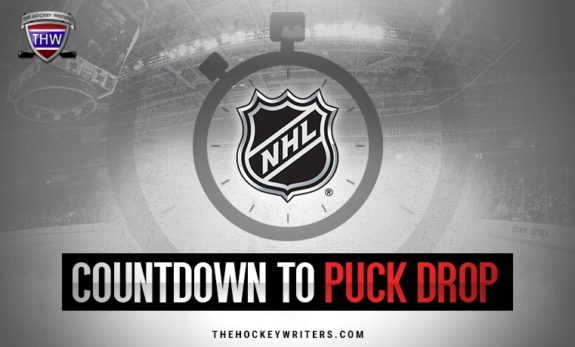
In 1972, a trio of entrepreneurs who dared to challenge the NHL’s monopoly on professional hockey created an upstart league — the World Hockey Association.
One of the teams established in previously hockey-starved markets was the Winnipeg Jets, who skated their first of seven WHA seasons in 1972-73.
We are 72 days away from the start of the 2019-20 NHL season (although we’ll actually have to wait 73 days for the Jets’ season-opening game against the New York Rangers.)
As part of The Hockey Writers’ site-wide “Countdown to Puck Drop” series, here’s a look back at the WHA Jets’ inaugural campaign.
Jets Helped Give WHA Credibility
On June 27, 1972, Jets president Ben Hatskin — a born and raised Winnipegger who played six seasons for the Canadian Football League’s Winnipeg Blue Bombers between 1936-1941 before making a fortune investing in “everything from lumber companies to jukebox distributorships” — made an announcement that showed the WHA would not be a second-rate league.
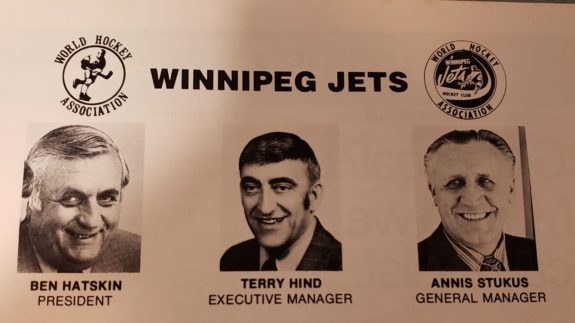
Standing at Winnipeg’s iconic Portage and Main intersection, Hatskin announced he’d lured one of the NHL’s biggest stars — five-time 50-goal scorer and Stanley Cup champion Bobby Hull — from the Chicago Blackhawks.

Hull didn’t come cheap. In fact, his contract was the richest ever given to a North American athlete, coming in an eye-popping (by 1972 standards) $2.75 million over 10 years. Hatskin, one with a flair for the dramatics, also presented Hull with a giant cheque for a $1 million signing bonus (part of the $2.75 million figure). The idea of a signing bonus was, at the time, unheard of and considered absurd.

Hull, unhappy with the paltry NHL salaries, had previously joked he’d jump to a WHA team if they gave him $1 million and Hatskin was happy to oblige. “The “Golden Jet” would go on to notch 638 points in 411 games as one of the league’s perennial all-stars.
In an article in a program from the Jets’ first-ever WHA game — which the author’s parents have kept in near-mint condition for nearly 50 years — Hatskin was quoted as saying:
Getting a superstar like Hull would mean instant-league in the minds of the public and the news media. Also it would cause other players to take the WHL seriously. There are only three or four superstars in hockey. All but Hull were tied up. He was out trump card. We went after him and we got him.
Hatskin was bang-on. The Hull signing lent the WHA instant legitimacy and an avalanche of “defectors” ensued. By the time the puck dropped that fall, 67 former NHLers were on the 12 WHA squads, including Gerry Cheevers, Ted Green, and Bernie Parent.
Jets Enjoyed Inaugural Season Success
After building their roster, comprised entirely of Canadians and 11 NHL alumni — most notably, Ab McDonald, a Winnipegger and the most experienced of the bunch (beside Hull) — the Jets began their inaugural season on Oct. 12, 1972.
Their first-ever game was also their first-ever win, as they captured 6-4 triumph over the New York Raiders. McDonald, the captain, scored the first goal in franchise history.
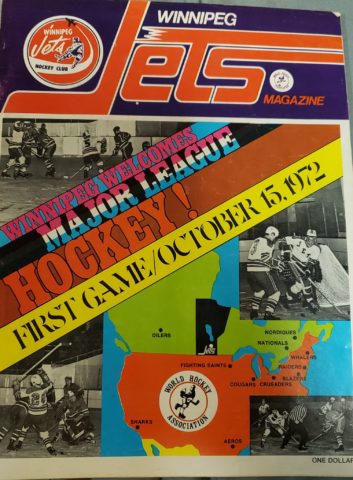
In their home opener On Oct. 15, in front of 8,123 fans, they fell 5-2 to the Alberta Oilers. 28-year-old centre Danny Johnson had the distinction, however, of scoring the first-ever Jets’ home goal at 7:11 of the second period.
The Jets would prove throughout 1972-73 to be an excellent team not to be taken lightly. They had five winning streaks of three games or more, including a run of 11-straight victories between Feb. 8 and Mar. 4.
Offensively, they were led by the “Luxury Line,” made up of of Hull, Norm Beaudin (the first signing in Jets’ history) and Chris Bordeleau. Hull and Beaudin put up 103 points each and Bordeleau was just two behind with 101.
Overall, the Jets posted a 43-30-4 record, good for the top spot in the WHA’s West Division. They piled up 285 goals and allowed just 249.
Jets Fell Just Short of Avco Cup Glory
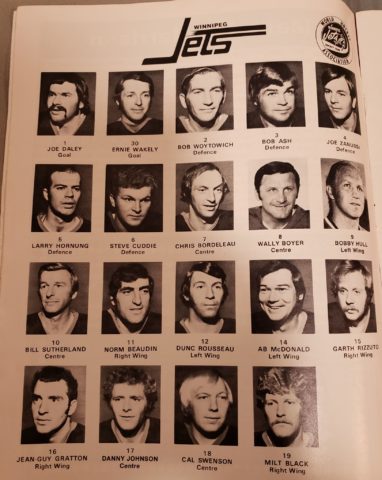
Although the Jets finished first in the West, they fell just short of winning the Avco World Trophy that season.
They rolled through the first two rounds of the playoffs, beating the Minnesota Fighting Saints in five games before sweeping the Houston Aeros in four straight to advance to the Avco Cup Final.
However, in the Final, they were outclassed by the New England Whalers.
Led by Terry Caffery, Tim Sheehy, and Tom Webster, the Whalers — who finished first in the East Division and first overall with a 46-30-2 record — scored 33 goals in the series and captured their only Avco Cup with a 9-6 Game 5 win on May 6, 1973 at Boston Garden.
1972 Was Just the Beginning
While their inaugural season didn’t end with a championship, the Jets’ first WHA season was important as it introduced the market to professional puck, marked the beginning of much WHA success, and set the foundation for Winnipeg’s rich hockey heritage.
In the seven seasons prior to the WHA’s demise, the Jets captured a trio Avco Cups, including in the league’s final season.
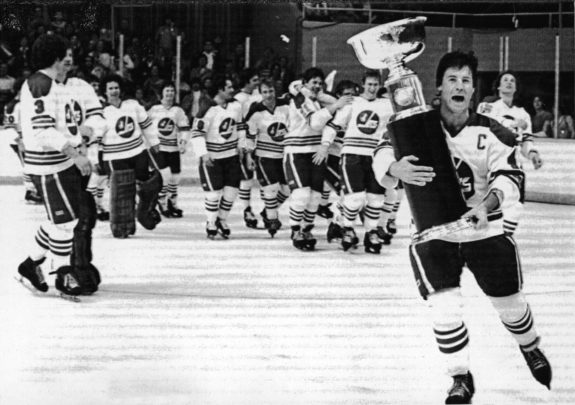
Of course, the Jets were one of four teams merged into the NHL prior to the 1979-80 season, and would play 17 seasons in Winnipeg until they departed for Phoenix. While the Jets didn’t have as much success after moving to the NHL, one can see the influence of the WHA era on Winnipeg even today.
Most obviously, the current Jets, relocated from Atlanta in 2011, bear the same name Ben Hatskin gave his squad nearly 50 years ago.
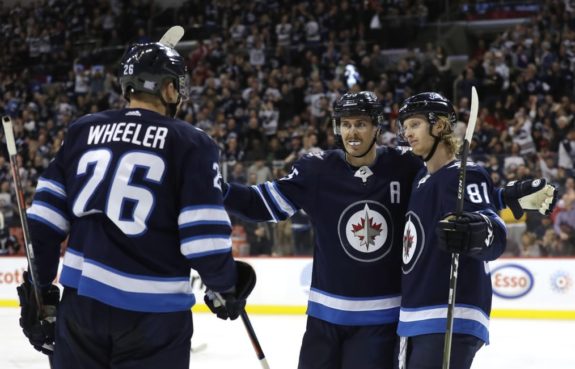
Banners bearing the names “Hull,” “Nilsson,” and “Hedberg” — the trio that made up the WHA Jets’ legendary “Hot Line” — hang from the rafters of Bell MTS Place, as do the three Avco Cup championship banners. Ab McDonald, who passed away in 2018 at the age of 82, was inducted into the Jets Hall of Fame in February.
Indeed, although the details and the influence of the Jets’ inaugural campaign may be lost on many current-gen Jets’ fans, it should be revered and remembered. It was integral for paving the way for two incarnations of NHL Jets hockey and for planting the seed that allowed Winnipeg to blossom into the raucous, hockey-crazed market it is today.